I’ve covered a lot of incredible chord progressions over the years. And I wanted to pick through them to find the tricks they used. And how those tricks added to the story the song was telling.
Let me know your favourite progressions in the comments.
8. Amy Winehouse – Back to Black
The Chords
How it Sounds
What Makes this Progression So Good?
First, it’s in saddest of all keys D minor. But my favourite part is the chromatic move down from Bb to A (chromatic means you move up or down one fret). That falling back feels so resigned and deflated. It’s perfect for the song.
7. Dream a Little Dream of Me
The Chords
How it Sounds
What Makes this Progression So Good?
This song, written by Fabian Andre and Wilbur Schwandt and covered by everyone, uses the same chromatic trick twice. Being in a major key it gives the move a lazy and dreamy quality.
6. Bon Iver – Skinny Love
The Chords
This one is in open-C tuning i.e. the A-string is tuned down to G.
How it Sounds
What Makes this Progression So Good?
This song makes great use of drones i.e. notes that stay the same through all the chords. And I made sure that carried through on the ukulele version by using an open tuning. So the C-string rings through the whole progression and the E-string for all but one chord.
Skinny Love also makes use of dissonance on the D7sus2. That chord has three notes close to each other: B, C and D. These clash to create an uncomfortable feeling that propels the progression forward. I wrote more about that in the best ukulele chords post.
5. Carly Simon – Nobody Does It Better
How it Sounds
What Makes this Progression So Good?
The IV to iv chord change (Bb to Bbm in this case) is an absolute classic. This change is the famous
strange change from major to minor in Every Time We Say Goodbye. You can also hear it in Radiohead, in Arctic Monkeys #1 Party Anthem and umpteen by the Beatles. It’s another case of a chromatic move down but this time on just the C-string. Going from 2nd fret to 1st fret and resolving to the open string for the F chord.
After that is another neat trick: introducing notes on top of a base chord. So the underlying chord is F and she adds 9 and 7 notes on top of it.
4. ABBA – Dancing Queen
The Chords
How it Sounds
What Makes this Progression So Good?
This is a clever twist on changing notes over background chords. The notes on top of the chords (g-string, 1st fret to g-string, second fret) are repeated for each chord.
3. (I Wish I Could Shimmy Like) Sister Kate
The Chords
How it Sounds
What Makes this Progression So Good?
This is my absolute favourite chord turnaround. It’s adapted from Bob Brozman’s guitar version. The first three chords combine drones on the g- and E-strings with chromatic notes on the C- and A-strings. But this time the notes are ascend chromatically. That creates the opposite effect and makes the song a lively, excited.
2. Prince – Purple Rain
The Chords
How it Sounds
What Makes this Progression So Good?
Another chord progression using drones. This time the notes on the E- and A-strings sound through the first three chords.
But the highlight of the progression is the use of Bb9 and Eb9. These are unsettled chords like the D7sus2 in Skinny Love. But they’re not discordant. They’re melancholy and restless. The song is in Bb and using a Bb9 means the progression doesn’t feel like it’s relaxed and complete. The chords keep cycling and never resolves.
I wrote more about Prince’s use of 9 chords here.
David Bowie – Life on Mars
The Chords
How it Sounds
What Makes this Progression So Good?
The pre-chorus section of Life on Mars uses the ascending chromatic notes over chords trick and keeps doing it until your head is about to explode.
First there’s an Ab chord with ascending notes on the C-string. Then it moves to Db and ascends on the E-string (Note: I adjusted the chord names to make them more readable). This section is the perfect over-the-top build up for the contrast between the mundane life the mousey haired girl is living in the verse and grandiosity of what’s happening on the silver screen.
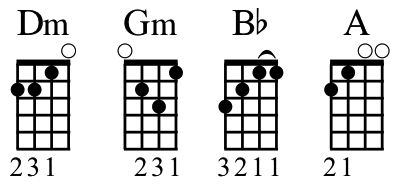
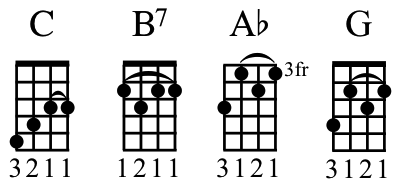
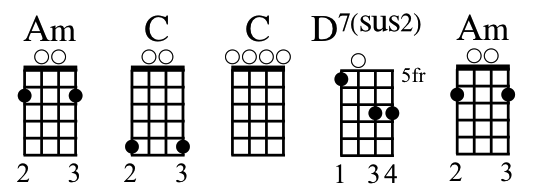



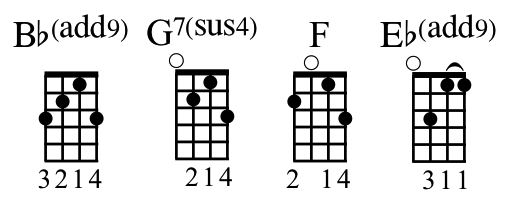
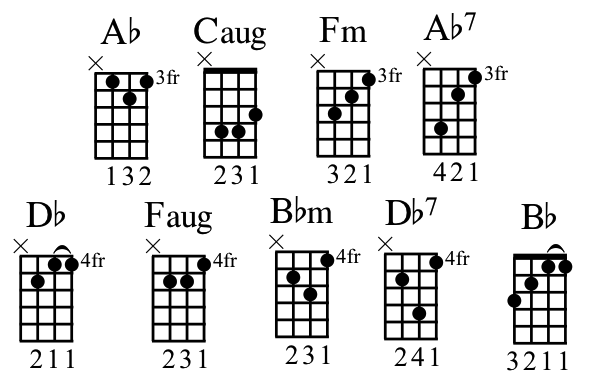



Interesting. Good to see Shimmy and Dancing Queen in your list. Without the musical theory to back it up, here are two of my favourites: F, Dm, E7, Am, and repeat, as in Coolio’s Gangstas Paradise or Stevie Wonder’s Pastime Paradise. It’s a very easy progression, but I really like how it sounds right with any combination of strum or picking pattern you care to try. It’s addictive. The other is Em, Ebaug, Em7, A9, G, D7, G, B7, as in Blue Skies. I am a sucker for a freewheeling rundown on one string, in this case the E. I find that single finger change satisfying to play. Then that rundown shifts back into gear from the A9 to the perkier G and D7 and you’re away. It just fits the contrasting lyrics so well –“Skies were grey but they’re not grey any more” and the use of the word “blue” to denote happiness. Clever stuff that I dare say you could analyse further.